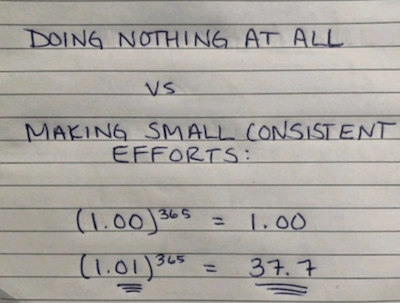How to balance client time with practice development





by Tony Vidler ![]()
![]()
![]()
 An ongoing challenge for advice firms is balancing client time with all the practice development work necessary to have a better business. There are after all only so many hours in a day, but then there are deadlines for when new standards and rules have to be met if one is to stay in practice. But then we also would really like to be commercially successful and make all this effort worthwhile, so there is no point trying to stay in practice if you are seeing no clients and making no money while you are doing it all….
An ongoing challenge for advice firms is balancing client time with all the practice development work necessary to have a better business. There are after all only so many hours in a day, but then there are deadlines for when new standards and rules have to be met if one is to stay in practice. But then we also would really like to be commercially successful and make all this effort worthwhile, so there is no point trying to stay in practice if you are seeing no clients and making no money while you are doing it all…. 
Looking beyond the logistical challenge of “too many things to do in too little time” there is the added stress of the competing priorities: the client demands are increasing and relentless, as are the expectations of other external stakeholders such as regulators and suppliers only ever rise…and on it goes, right?
The dilemma is every hour or dollar spent with clients is one less for improving the systems and processes – or vice-versa.
The only practical way to balance these challenges is to adopt and constantly promote the concept of “incremental improvement” inside an advice practice.
Rather than try and tackle the necessary changes or find the time to develope the value of the business in one fell swoop by allocating days (or weeks) or thousands of dollars at a time, tackle it the way the proverbial ants eat elephants: one bite at a time.

Incremental improvement consists of working on one small piece each day that improves the process, or system.
Just one.
For example, instead of spending days re-drafting the template for an advice document perhaps, you would spend 15-20 minutes getting one part of the template perfect today. It might be just getting the wording precisely the way you want it for the section where you introduce the “recommendation”.
Tomorrow, spend 10 or 15 minutes getting the wording right for another piece of the template, such as explaining the basis of the research. The day after spend the same amount of time refining your client referral offer….
Apart from being an excellent time management technique where you begin to be able to balance the competing demands of dealing with the urgent and the important (which are not always the same thing of course), it alleviates stress throughout your entire organisation. Rather than have the drama of “big improvements are necessary right now” with the potential panic that can arise when people are faced with what seems to be insurmountable challenges, the mindset of “incremental improvement” introduces a calm and orderly approach that results in a continual sense of achievement and progress. In fact it changes the culture of a workplace reasonably rapidly too. It introduces a mindset shift that results in a continual re-design of systems and processes and workflows….improving efficiency without increasing stress or cost.
The interesting thing in my experience is that when you look back on the changes successfully made in your processes and systems over any given 2 or 3 month period, those little ant-bites add up to an enormous amount of progress in process improvements. Substantial change can be conducted without compromising the commercial viability of the practice or dramatically dropping client-facing time.
The maths say that it has an exponential impact too:

Organisation and some discipline is definitely required to make it work well – an ad hoc “everyone improve something today” type approach will not improve efficiency. So think about which processes or systems are the most important and spend a little bit of time mapping out what needs to be done, then proceed on an orderly basis with clear instructions to the people in your organisation.
It is the perfect approach for balancing client-facing time together with the back office work that must be done to improve processes, whilst also continually moving the practice forward and developing stronger intellectual property and eventually better capital value.
Comments (0)